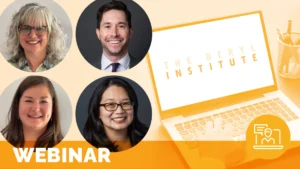A New Take on Patient Advocacy Rounding: An Advocate-to-Caregiver Approach Improving both the Caregiver and Patient Experience

By Kelly Gibbons MSN, RN
Rounding is a well-established practice in healthcare, known for significantly improving patient experience scores, reducing safety incidents, and enhancing caregiver satisfaction. But how can patient advocacy teams integrate into the rounding process to benefit not only the patient experience but the caregiver experience at the same time?
Many patient advocacy teams engage in patient rounding either proactively—by visiting patients shortly after admission to ensure their stay is going well—or reactively, by addressing issues with unhappy patients. However, what if advocacy teams focused on rounding with caregivers instead?
At Intermountain Health, we developed an Advocacy-to-Caregiver/Leader Rounding Program to empower frontline caregivers and leaders to resolve issues in real-time. This approach has proven to quickly rebuild trust with patients and their families and increase caregiver satisfaction by providing the tools needed to handle escalated situations effectively.
Purposeful rounding by advocacy-to-caregiver teams allows for:
- Developing relationships and building trust with leaders and frontline caregivers.
- Identifying learning needs and sharing complaint and grievance data for quality care improvements.
- Providing expertise in advocacy-related topics.
- Empowering leaders and staff with resources, including de-escalation tools to address patient, family, or caregiver concerns promptly and effectively.
- Connecting with teams compassionately while appreciating and celebrating team successes.
Advocates at each hospital plan quarterly rounds on specific units, coordinating with unit leaders. Preparation for rounding includes reviewing the complaint and grievance dashboard in the Event Management System (EMS). This helps identify trends and common themes from the previous quarter, to ensure meaningful discussions with caregivers.
Before rounding begins, advocates take time to consider the unit’s needs:
- Are there specific goals I need to accomplish, such as sharing new guidelines or resources?
- Are there concerning trends in the EMS or patient experience data?
- Are there follow-up items from last quarter?
After each rounding session, the advocacy team follows up with unit leaders to provide additional resources based on the conversations held. They also plan any necessary follow-up sessions before the next quarter, such as teaching units how to use the EMS to identify trends or discussing de-escalation strategies.
Patient advocates have highlighted the numerous new connections and relationships formed with frontline staff since the initiation of rounding. Meeting with care teams to offer support versus contacting them to share a patient concern has been refreshing for all teams. Gaining new perspectives and insights about various departments has helped frontline caregivers and leaders, as well as the advocates, better understand the reasons behind some patient concerns.
The advocates noted that most caregivers were very eager to learn, share information, and establish connections. Leaders and staff were excited to learn about resources they had previously been unaware of. With the ability of our EMS to capture the number of patient complaints that frontline caregivers resolve in the moment, one hospital saw a 36% increase in the number of complaints resolved by caregivers in the moment after the initiation of advocacy rounding.
Implementation of proactive advocacy rounding with care teams has been a win for patients, advocates and care teams. Patients feel listened to, cross-team relationships have been built, and staff have tools and resources to improve the experience of our patients.
About the Author:
Kelly Gibbons, MSN, RN is a Senior Manager of Clinical Relations/Patient Advocacy for Intermountain Health. Her 25 years in healthcare has allowed her to find her passion in creating an extraordinary patient experience and expertise in navigating patient complaints and grievances. She currently sits as an active council member on The Beryl Institute’s Patient Advocacy Council.
Related content
-
 Patient Family & Community Engagement | Staff & Provider Engagement
Patient Family & Community Engagement | Staff & Provider EngagementRound & Coach: Engaging Clinicians & Patients to Improve Communication and Care
This webinar presents four ways BSWH Hillcrest Medical Center improved HCAHPS scores to the 90th percentile. Discover how they incorporated elements of Relationship-Centered Communication to improve nurse and doctor communication. Learn how they engaged patients through consistent rounding. Key takeaways also include how capturing real-time patient feedback contributed to their overall success. Learning Objectives –
Learn more -
 Culture & Leadership | Infrastructure & Governance | Staff & Provider Engagement
Culture & Leadership | Infrastructure & Governance | Staff & Provider EngagementOwnership at the Frontline: Innovating an Experience Champions Program
Many patient experience teams are small, and it’s hard to do it all. Having an “Experience Champs” program allows us to have multiple hands with one voice influencing all locations. Experience Champs are made up of frontline staff members who are chosen by their leaders as passionate role models. During the last five years, the
Learn more -
 Staff & Provider Engagement
Staff & Provider EngagementCreating a Culture of Care & Respect: A Shared Responsibility for Those Serving and Being Served
In this Learning Bite, Hartford Healthcare shares its journey to a culture change to mitigate workplace violence. The system-wide program, “Mutual Care Mutal Respect,” TM mandates a caring environment based on shared responsibility between colleagues, providers, patients, and visitors. Learn how this journey has created healthcare experiences where people feel respected and cared for.
Learn more
